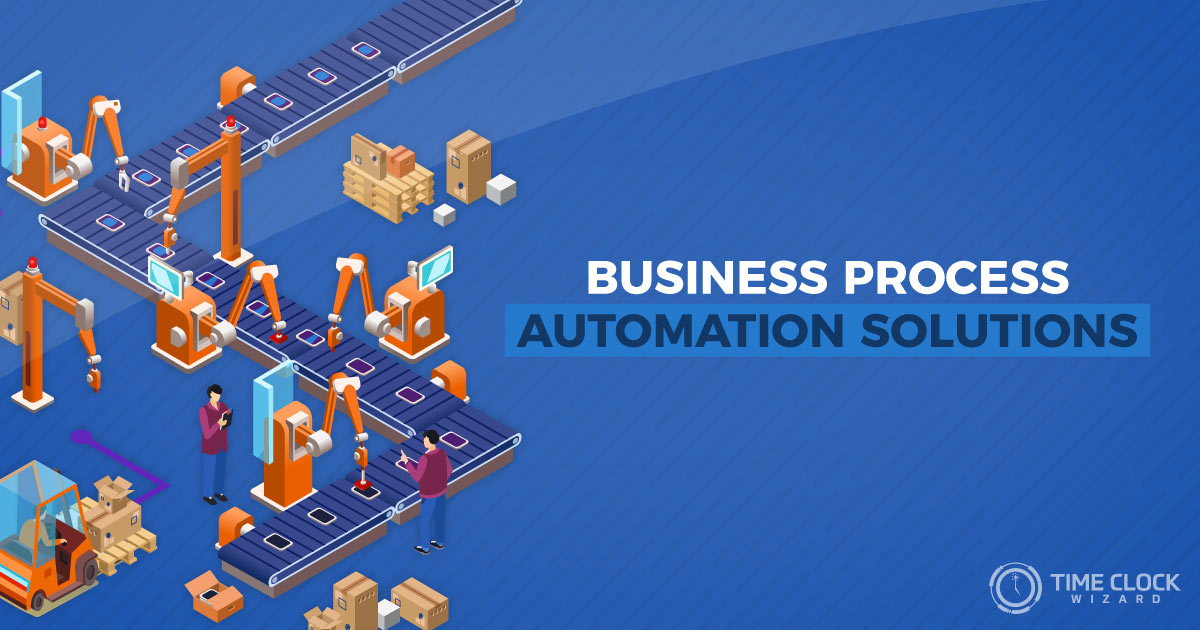
Business process automation is a setting where businesses apportion recurring business processes to systems instead of humans with the goal of increasing efficiency, decreasing costs, and cutting down paper trails. It is a subcategory of business process management, which entails managing and executing complex business processes using a variety of methods.
Simply put, business process automation is the systemization of complex business operations using technology. Automation makes tasks more manageable, especially if they would be seemingly complicated for humans. A proper application of business process automation solutions can help companies manage data, organize processes, supervise operations in real-time, and manage available resources. The ultimate goal of automation tools is to increase productivity and process stability.
The truth? We have all spent cherished time on routine business tasks that we would avoid if we could. It could be manual data input at the day’s end or sorting through a pile of documents and arranging them to keep related information in one place. We’ve all done the boring stuff.
Ease The Burden: Business Process Automation Solutions
1. Document Reviews
Good workflow software can generate, edit, and appraise documents produced regularly by a business, including contracts. It typically notes the tone, language, and formats the text accordingly. It can also adjust reports to be geographically accurate.
Approving the data at any point of the operation is possible. This means that qualified team members can make concurrent modifications and monitor changes immediately without requiring manual notice and without prolonging on deadlines or possible publishing of unfinished document.
2. Loan Approvals
Manual processes leave paper trails and increase time spent before loan approvals. The chance of making a mistake during the transfer of confidential data is high.
Process automation can simplify loan approval by removing the stress from submission, review, and processing. Automated workflow associates all correlating databases to prevent employees from having to input or evaluate information manually. This reduces the time spent collating data from customers living in different locations.
3. SMS Notifications
Emails are the conventional means of communication for many business operations, SMS click rates is higher than email click rates. This means that people tend to check and read their text messages faster than they read emails.
This improves the response rate and lessens the time taken to perform a task. Project managers can use process automation to incorporate SMS alerts into a business operation and increase the convenience and ease of working together with the team.
Business owners can go further by combining alerts from different means of communication (phone, SMS, email) to reduce the time employees spend on checking messages and notifications and allow them to spend that time executing the project.
4. Risk Mitigation
Process automation can decrease the number of forms necessary to work on manually and help ensure that the input data conforms to required regulations within the limits of the contract and the sector.
It is also possible to structure the workflow to notify the workforce of problems upon data input. Business owners can also create self-service notifications for each employee to find errors promptly to help them comply with the regulations before form submission.
Here are different usage scenarios for automation:
- In the financial sector, automation decreases fraud rate by producing complete audit trails for perusal and appraisal.
- In the machinery sector, automation can be designed to help employees conform to industry regulations, such as medical equipment and airplane assessments.
5. Media Submissions
Many production crews often have to upload submissions such as media plans or content proposals manually. Afterward, officials will examine the proposals and re-upload the files to a database.
These manual procedures waste valuable time, are unpleasant prone to errors. It also makes it impossible for the two parties to monitor submissions in multistage approval procedures. Automation saves this information and dispatches it to the right people at the appropriate stage, ensuring a more effective process flow.
6. Feedback Portals
Companies conduct surveys to get quality, measurable data. The exciting part is that automated surveys appear at the right time, using the customer’s activity at that particular time. Polls can also be administered to routinely request feedbacks at a set time – probably two or three months after the customer’s initial purchase. Besides, the automated process can forward the results of the survey to the appropriate people in the enterprise and store them automatically in the general database.
There is no additional configuration or manual scheduling required. Just run the initial set up and let it do its job.
7. Instant Customer Demos
Demos are effective methods for explaining the importance of a business solution to potential customers. Businesses that require this demo usually have their IT department provide such customized demo requests for customers. Workflow automation can help reduce the time and resources by preparing a demo template within a short period.
This template enables employees to handle the client’s data with minimal effort. Moreover, it helps to ensure the proper protection of sensitive customer information.
8. Product Renewals
For many businesses, the value of customer retention is the same as customer acquisition and sometimes more. Missing a sales or upsell chance when a customer refuses to renew their subscription or update their account can be terrific. Rather than waste time on trying to get them to renew, it is better to ensure they never forget to do it in the first place.
The sales department should not have to send notifications manually to customers when their product or service subscription is about to expire.
When a customer buys a product or makes a subscription, automation connects the purchase details to the primary database and saves their data. Using the product or service information, it will email them a notification when their subscription date is near and apprises the database accordingly. This automation averts the expiry of subscriptions and ensures a sales team never loses vital sales chances.
Automation provides insight into the reason customers refused to renew their product license or subscription, allowing business owners to discover and solve issues against future occurrences.
9. Employee Status Changes
Whenever an employee status changes, most HR departments have to make the updates manually. For instance, if a director awards an employee a promotion, the HR department must be notified of a salary raise, get authorization from the financial department, scan files and save them in the right place. The process is cumbersome and slow with high possibilities of human error.
With business process automation, the director or supervisor only has to complete a form concerning the changes. The automation performs the task of obtaining approvals, product and dispatch the correct additional documents and file them correctly. The process is seamless and accurate, reducing possible human errors.
10. Stacking Multiple Processes
With automation, business owners can connect different business applications, content storages, or cloud services. By streamlining various applications, a team member (both on-site and off-site) will be able to collaborate effectively and simplifying work processes regardless of location.
Softwares to Begin Business Process Automation
Where can you start to look for outlets to begin business process automation according to what task they need to accomplish? Find a helpful compilation of programs ranging from employee time tracking softwares to project management apps to help you begin better business process automation.
1. Team Communication
Communication is essential for productivity, collaborations, and better work efficiency. For team communication and collaboration our choice tools is:
Slack
Slack is excellent for team collaboration through instant messaging. Team members can make phone calls and share files. The software allows business owners to set up different channels for specific topics, teams, or projects. It is also possible to integrate other automation tools on slack.
Other communication tools include Flowdock and HipChat.
2. Project Management
Projects are the backbone of any business and are consequently the giving the utmost attention. It is essential to prioritize project management and monitor the progress until completion. Studies have shown that 57% of projects flop because of inefficient communications. Project management tools make it possible to collaborate productively and keep track of projects using milestones.
Our choice for project management automation software:
Trello
This is one of the most common project management software out there. It has customizable boards and aids in categorizing tasks with cards regarding priority, team members, and project deadlines. It also supports pictures, comments, and checklists.
Other tools include Asana and Basecamp.
3. HR Management
HR experts use automation software for importing, sorting, and storing digital files, archive records, and collecting data. This makes their job easier and faster. Our choice for HR management tool:
BambooHR
BambooHR is currently and arguably the best HR management automation software. It is an excellent tool for small and medium enterprises and has features such as centralized employee database, quick reminders, controlled access, accurate reporting, and simplified recruitment. The software gives access to employee data at any time or location.
Other HR management tools include Namely and Zenefits.
4. Time Tracking Software
The use of employee time tracking software can help monitor employee work hours for payroll, billing, or operations. They help keep track of the time employees spends on specific tasks. An excellent example of such tools is the TimeClockWizard.
5. Marketing and Social Media
Staying active on social media platforms is not as easy as people think. Business owners often have to do researches, create and schedule posts, reply comments and also continually stay updated on the latest trends and tactics. Automation tools can help deal with this hassle.
Our selection for social media marketing:
Buffer
Buffer is a popular marketing tool that helps marketers schedule posts, monitor post analytics and manage every social media accounts from one place.
MailChimp
For email marketing campaigns, business owners can automate the process using MailChimp. This tool helps to generate the concise email campaign and dispatch it to hundreds of recipients at once.
Hootsuite is another helpful tool for social media.
6. Customer Relationship Management (CRM)
It is vital to always pay attention to customers. Automating customer interaction and sales is possible. The tools available can help track business deals and complete transactions.
Our selections of customer relationship management software include:
Pipedrive
Pipedrive acts as a company’s sales manager. The automation tool is incredibly versatile and helps to monitor sales progress and manage leads. Pipedrive can help ensure an effective sales strategy, better customer relations, and better sales management.
Other tools include Zoho and Fieldbook.
Business process automation improves efficiency and helps business owners and their team save countless work hours, thousands of dollars, and frustration. Automation can help you organize and manage those minor operations that often go unnoticed during the digital transformation process.







